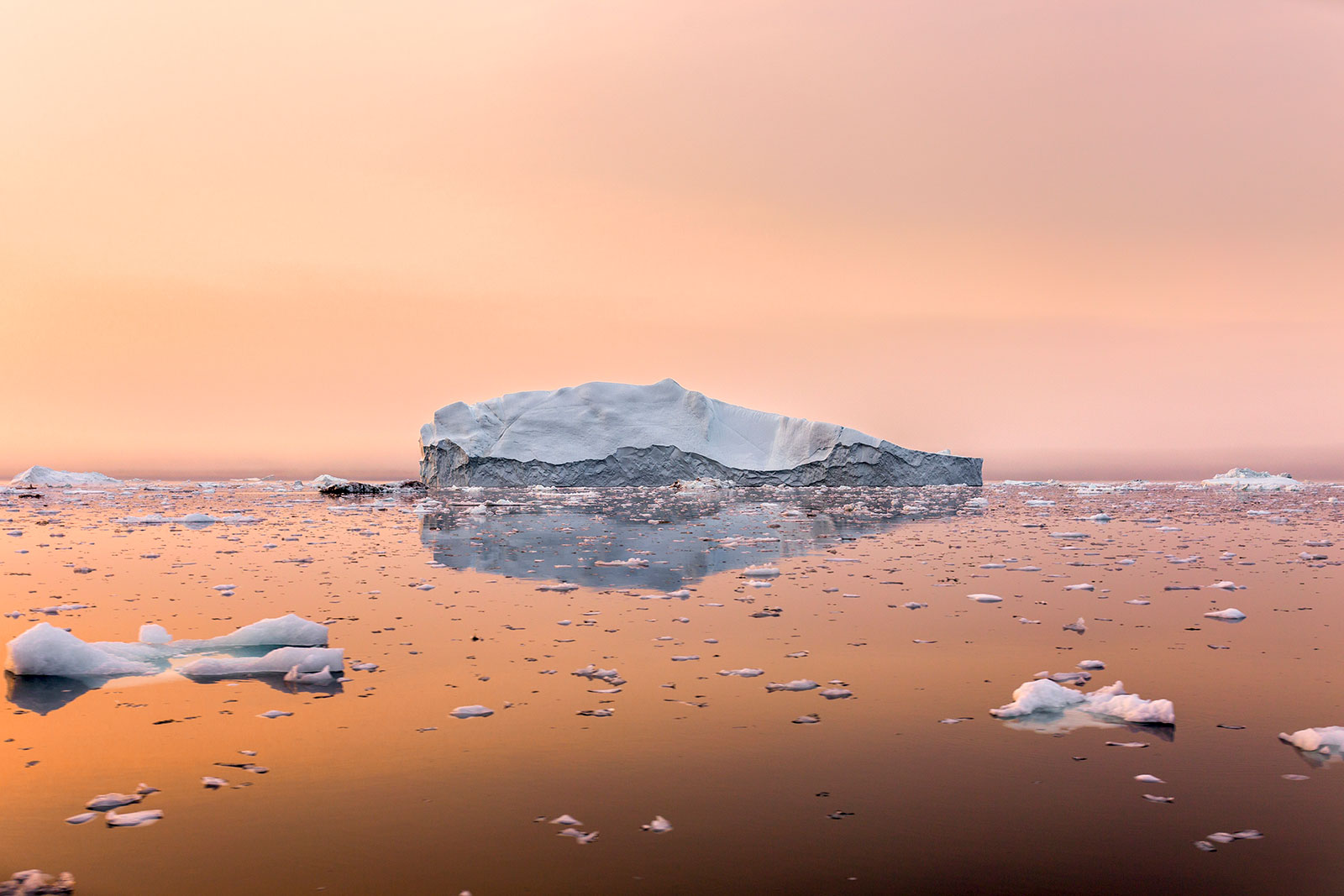In 1938, British engineer Guy Callendar first suggested that the rise in global temperatures was a result of human activity. Fellow scientists dismissed this theory, believing humans couldn’t possibly impact something as colossal as the climate. It wasn’t until the late 1980s that the public was first made aware of the hazards of climate change, but even today, there are still those who deny the scientific fact that climate change is a very real threat (including the president of the United States).
Climate change can be seen in rising temperatures and increased natural disasters, hotter summers and colder winters, worsening droughts and fires — but this only speaks to environmental effects. A host of other less-conspicuous outcomes threaten life as we know it: global pandemics (like the one caused by the COVID-19 virus), skyrocketing rates of clinical depression, the extinction of up to 1 million plant and animal species, and, perhaps most concerning to readers of this magazine, increased rates of cancer.
CA: A Cancer Journal for Clinicians, a journal from the American Cancer Society (ACS), published a first-of-its-kind commentary in May 2020 about the impact of climate change on cancer prevention and care. According to the report, climate change most explicitly affects cancer risk due to the increase in the number and severity of extreme weather events, like hurricanes and wildfires. The effects of extreme weather lead to increased exposure to cancer-causing carcinogens, while the destruction of infrastructure affects access to clinics and clinicians’ ability to administer treatment.
The CA report examines specific events like Hurricane Harvey, which hit Texas on Aug. 25, 2017. Harvey caused unprecedented precipitation, “which human-induced climate change made 3.5 times more likely to occur,” the report says. Customary to heavy rainfall, chemical plants, oil refineries and Superfund sites released an incredible amount of carcinogens into the Houston community. The hurricane caused 103 deaths in the direct aftermath, but the number of deaths from cancer due to air pollution in the years to come will be virtually incalculable.
But climate change isn’t just a direct cause of higher cancer rates—it also inhibits cancer screening. Regular checkups and screenings are imperative to catching cancer before it becomes advanced. Advanced cancer is more difficult and expensive to treat, and less likely to be treatable.
The effects of extreme weather lead to increased exposure to cancer-causing carcinogens, while the destruction of infrastructure affects access to clinics and clinicians’ ability to administer treatment.
A March 2020 study from Japan’s Tohoku University examined one natural disaster’s effect on cancer screening — the first to investigate how disasters affect women’s health, in particular. The study compared cervical cancer screening rates in Miyagi Prefecture before and after the Great East Japan Earthquake, which hit Japan in March 2011. The study found that cervical cancer screening rates dropped by at least 3 percent in the tested areas. This percentage was greater in coastal cities, presumably because these cities experienced more extensive damage due to the disaster. In Onagawa, for example, cervical cancer screening dropped by 7 percent after the disaster.
The study investigated a phenomenon called “patient delay,” a well-known problem for cancer treatment in similarly affected areas. The Tohoku study references another from Tulane Medical School in New Orleans, which found the average time between screenings to cervical cancer diagnosis in the aftermath of Hurricane Katrina was significantly longer than it was pre-disaster — 7.7 years compared with 4.2 years. The stage of cervical cancer diagnosis was higher after the hurricane, as well.
Not only do natural disasters reduce the rate of potentially life-saving cancer screenings, but they may also cause abnormal menstrual cycles, pelvic inflammation and genital tract infections, all factors that raise the risk of cancer. Stress is also a risk factor. “Psychological stress is believed to exhibit immunosuppressive effects through the inhibition of several lymphocyte functions,” the Tohoku study states, noting that stress can directly promote the development of tumors.
Of course, those already in treatment for cancer will also be negatively impacted by natural disasters. The CA report also refers to the aftermath of 2018’s Hurricane Maria, which shuttered a factory in Puerto Rico that produces the majority of small-volume intravenous fluid bags for most of the U.S. “This led to national shortages of intravenous fluids and difficulties with intravenous medication administration in many cancer treatment facilities,” the report says. Which begs the question — in the wake of a natural disaster, if the clinic is still standing, are the necessary materials going to be available?
A 2017 report in the journal BMC Cancer looked at breast cancer patients in the aftermath of Japan’s 2011 earthquake. The research focused on patient delay in breast cancer patients in Fukushima, specifically, and found the disaster led to five times more risk of patient delay than observed before the disaster. This increase in risk continued in the years following. Extreme weather events like a hurricane provide opportunities to assess how “rapidly-changing social contexts may impact patient delay, as they can simultaneously disintegrate social connections of victims and access to medical institutions, while exposing disaster victims to high levels of stress.”
Not only do natural disasters reduce the rate of potentially life-saving cancer screenings, but they may also cause abnormal menstrual cycles, pelvic inflammation and genital tract infections, all factors that raise the risk of cancer.
It’s not surprising that natural disasters affect how cancer patients receive treatment, but it is devastating how such disasters result in higher rates of death within specific communities. The ACS report nods to this: “As climate change is altering the frequency, intensity, and behavior of extreme weather events, it is exacerbating the vulnerability of communities to natural disasters by making it harder to prepare and respond to increasingly unpredictable and severe weather.”

Cancer has always disproportionately affected vulnerable groups. In the case of extreme weather, communities in the path of destruction will experience increased cancer rates, but these same disparities are seen outside of natural disasters, too. Low-income communities have disproportionately high rates of cancer and cancer mortality. And due to centuries of systemic racism, these low-income communities are overwhelmingly non-white. Ongoing research from the Kaiser Family Foundation, a nonprofit focusing on national public health, breaks down poverty rates by race and ethnic group. Only 9 percent of Americans experiencing poverty (as defined by the U.S. government) are white. The top two population groups experiencing poverty in the U.S. are Black (22 percent) and American Indian/Alaska Native (24 percent).
These horrific disparities in cancer prevention and care are mirrored in the context of climate change. According to an April 2010 report from the National Institute of Environmental Health Sciences (NIEHS), “Poverty generally makes people more vulnerable to many of the health effects of climate change, largely due to inadequate access to health care.” Additionally, “for such populations, the effects of climate change such as temperature and weather extremes, disruptions in access to public services including health care and food assistance programs, and increased stress are all magnified by their preexisting conditions or situations.”
New York City’s Memorial Sloan Kettering Cancer Center, one of the country’s leading cancer care facilities, took measures to make itself “more resilient to the threats of extreme weather and climate change” in the wake of 2012’s Hurricane Sandy, and other cancer care facilities have followed suit. While these actions may help mitigate the negative effects of climate change for some, facilities within vulnerable communities might not be able to carry out the same measures.
According to a 2016 assessment distributed by Sloan Kettering, 81 percent of the center’s patients were white, despite the same assessment noting that Black men have the highest rates of cancer incidence, and are also more likely to die from cancer than any other race/ethnic group. This correlates with a July 2020 New York Times story about the coronavirus pandemic that said coronavirus patients at some community hospitals in New York City were “three times more likely to die than patients in the wealthiest parts of the city.”
In the wake of a natural disaster, if the clinic is still standing, are the necessary materials going to be available?
While hurricanes and global pandemics ravage public health, they are not the only threat. As with hurricane seasons, wildfire seasons are worsening as well. As summers get hotter and longer, wildfire seasons are extending beyond the usual parameters, with larger and more frequent fires. As reported in Cancer Wellness issue 4 (“After the Fire”), wildfires release toxins and degrade air quality long after the blaze stops burning. Hazardous particulates caused by the fires can travel great distances, causing higher rates of heart and lung damage, immune problems, and cancer, sometimes regardless of a community’s proximity to the fire itself.
Air quality is governed by a “complex atmospheric chemistry,” according to the NIEHS, which is primarily modulated by heat, humidity, U.V. radiation and other factors. Climate change interrupts the entropy of nature which drastically reduces the quality of the air we breathe. Wildfires release toxic chemicals from the destruction of man-made property — the burning of things like cars and refrigerators releases toxins into the air, but wildfires are also known to release asbestos from bedrock of older homes, along with fungi and other natural allergens. Natural or not, the burning leads to devastating air pollution and—sometimes decades down the line—cancer.
Worsening wildfires also increase the destruction of natural habitats. According to the NIEHS report, “Changes in temperature can extend or reorient habitats such that organisms are introduced to new geographic areas or life cycles are altered.” As organisms adapt to a new way of life due to increased temperatures or extreme weather events, increase in pesticide use will naturally follow. In addition to more toxic chemicals in our water, food and air, this also leads to an increase in waterborne diseases as well as diseases that are transferred from animals to humans, according to the NIEHS. Sound familiar? Never has humanity been so familiar with a “zoonotic” disease until the emergence of the COVID-19 virus, which has caused an ongoing pandemic.
An interview with Dr. Aaron Bernstein published on Harvard’s T.H. Chan School of Public Health website further connects the destruction of natural habitats to worsening public health outcomes. According to Bernstein, the director of Harvard’s Center for Climate, Health, and the Global Environment, as the planet warms, more animals migrate to the poles, and therefore come in contact with species they normally wouldn’t. “That creates an opportunity for pathogens to get into new hosts,” Bernstein says. “Historically, we have grown as a species in partnership with the plants and animals we live with. So, when we change the rules of the game by drastically changing the climate and life on earth, we have to expect that it will affect our health.”
The effects of climate change such as temperature and weather extremes, disruptions in access to public services including health care and food assistance programs, and increased stress are all magnified by their preexisting conditions or situation.
-National Institute of Environmental Health Sciences (NIEHS), 2010
The coronavirus pandemic is one extreme example, but as these extreme examples become more and more commonplace, so too does the loss of human life. And it is the communities that are most vulnerable experiencing the brunt of these effects. It is imperative that we take actions now to reduce the negative health impacts of climate change. “The separation of health and environmental policy is a dangerous delusion,” Bernstein says. “Our health entirely depends on the climate and the other organisms we share the planet with.”
The effects of climate change don’t have to plague future generations, but time is running out. “Actions to combat climate change and lessen our use of fossil fuels could prevent cancers and improve cancer outcomes,” says the CA report. How we reduce cancer occurrence is how we slow climate change: better diets, cleaner air and more responsibility taken by those in charge to protect and support the communities that are most vulnerable. To put it simply — to help one of us is to help all of us.







